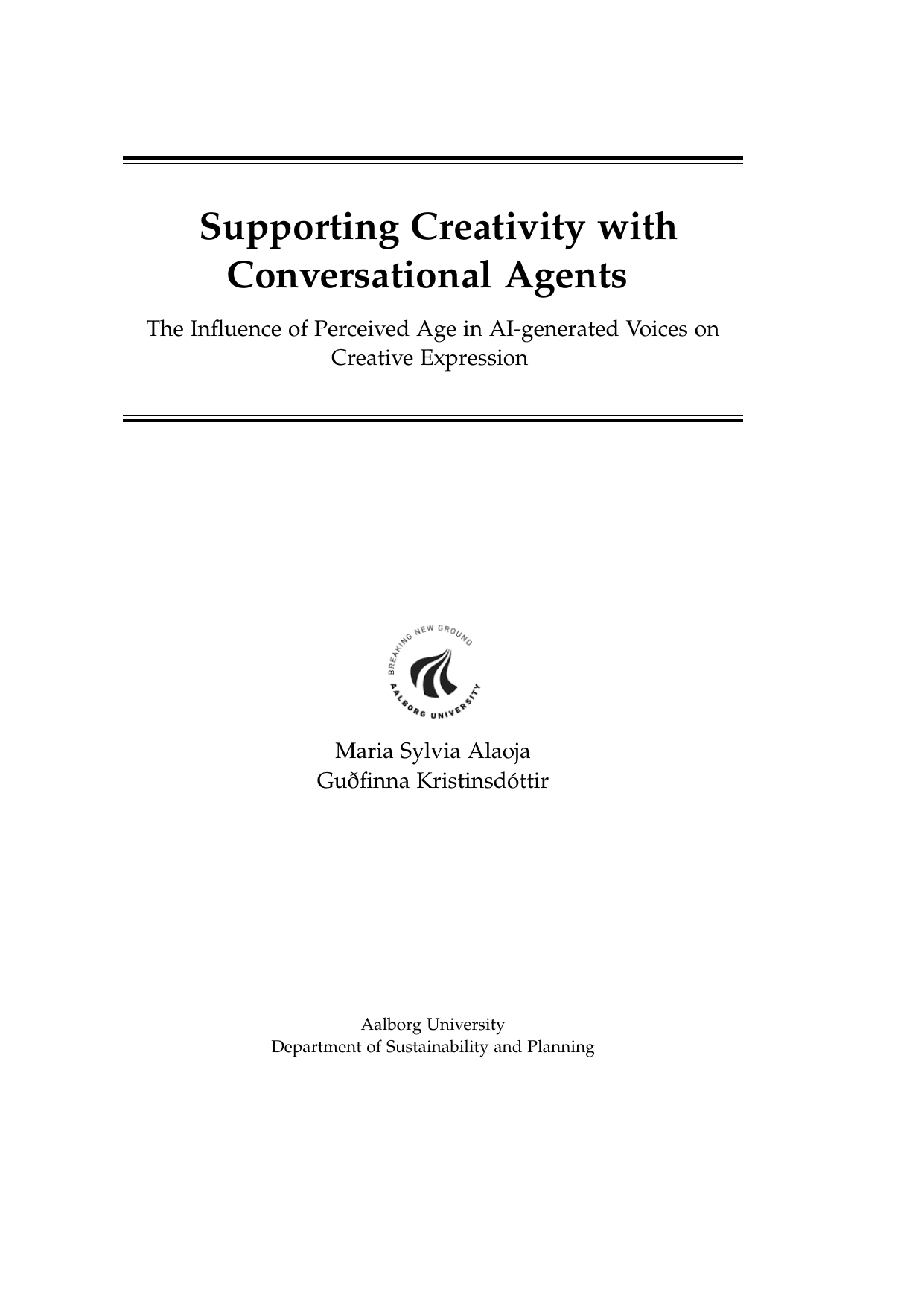
Affording Creativity with Conversational Agents: How perceived age difference in AI-generated voices influences creative expressions
Authors
Term
4. term
Education
Publication year
2025
Submitted on
2025-05-26
Pages
52
Abstract
This Master’s thesis in Techno- Antropology is based on a collaboration between Aalborg University’s Department of Materials and Production, Robotics and Automation team, and LEGO®. It explores how child-like versus adult-like AI generated voices affect verbal creativity in a play-based setting, where we custom-built voiceinteractive game and adapted TTCT metrics. Drawing on both qualitative and quantitative methodologies, we analyse the socio-technical conditions that shape creativity assessment and engagement. We critically examine the assumptions embedded in standardised creativity metrics through the lens of the Sociology of Scientific Knowledge (SSK), and propose a context-sensitive approach to measuring creativity as a socially embedded and co-constructed phenomenon. Preliminary data from adult participants establish a comparative baseline for a forthcoming study with children aged 9–12. Through this interdisciplinary approach, the project contributes to more responsible and reflective AI design for child users.
This Master’s thesis in Techno- Antropology is based on a collaboration between Aalborg University’s Department of Materials and Production, Robotics and Automation team, and LEGO®. It explores how child-like versus adult-like AI generated voices affect verbal creativity in a play-based setting, where we custom-built voiceinteractive game and adapted TTCT metrics. Drawing on both qualitative and quantitative methodologies, we analyse the socio-technical conditions that shape creativity assessment and engagement. We critically examine the assumptions embedded in standardised creativity metrics through the lens of the Sociology of Scientific Knowledge (SSK), and propose a context-sensitive approach to measuring creativity as a socially embedded and co-constructed phenomenon. Preliminary data from adult participants establish a comparative baseline for a forthcoming study with children aged 9–12. Through this interdisciplinary approach, the project contributes to more responsible and reflective AI design for child users.
Documents
